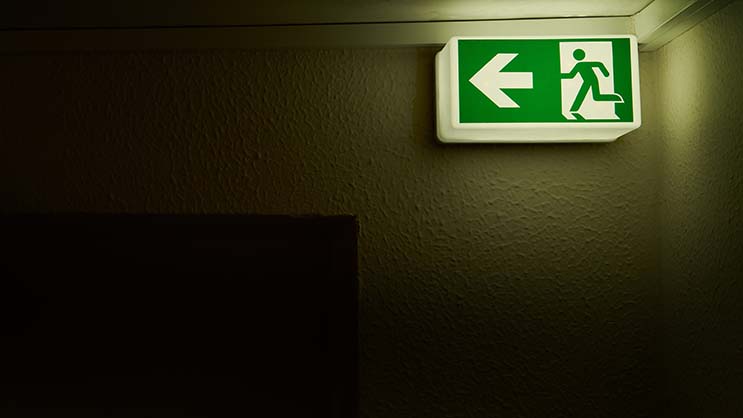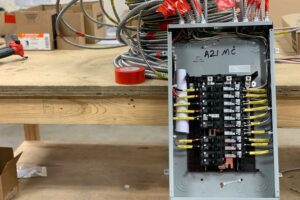When emergencies strike, having a reliable emergency lighting system in place is crucial to protect your employees and customers.
Proper installation of emergency lighting systems involves strategic placement of exit signs and emergency lights, and wiring connections to a reliable power supply and backup batteries.
By implementing the measures, you can ensure the safety of the environment within your premises.
Understanding the Importance of Emergency Lighting Systems
Before diving into the installation and maintenance procedures, it is essential for business owners to understand the significance of emergency lighting systems. This can help your business to protect its employees and customers by:
- Enabling safe evacuation: During emergencies such as power outages, fires, or natural disasters, normal lighting may fail. Emergency lighting systems provide illumination, ensuring a clear and safe path for evacuation.
- Protecting lives and assets: Your employees and customers are your most valuable assets. By investing in emergency lighting systems, you prioritize their safety, potentially saving lives and reducing injuries during emergencies.
- Enhancing business continuity: Disruptions caused by emergencies can have a significant impact on your customer service and business operations. Having reliable emergency lighting systems in place helps mitigate these risks.
- Facilitating swift response from emergency personnel: Emergency personnel need proper visibility to navigate your premises efficiently during critical situations. Emergency lighting systems ensure that fire extinguishers, emergency exits, and safety equipment are clearly visible.
Prioritizing safety is not only ethically responsible but also crucial for the long-term success and reputation of your business.
Planning and Designing the Emergency Lighting System
Planning and designing emergency lighting installation is an important step in ensuring the safety and security of your business (as well as preventing any electrical safety issues that may arise during the installation process). Having a well-designed system in place can make all the difference in effectively guiding occupants to safety.
This process involves 3 crucial aspects:
- Conduct a thorough assessment: Start by assessing your business space comprehensively. Identify critical areas, emergency exits, stairwells, corridors, and rooms that require emergency lighting.
- Comply with regulations: Familiarize yourself with local safety regulations, building codes, and emergency lighting standards. Ensure your system meets these requirements to guarantee compliance and avoid penalties.
- Determine the lighting type: Select the appropriate emergency lighting types for each area. This includes exit signs, emergency luminaires, and high-visibility wayfinding systems. Consider factors such as brightness, battery life, and the duration of backup power needed.
By investing time and effort into planning and designing your emergency lighting system, you can create a comprehensive and reliable solution that not only meets compliance requirements but also enhances the overall safety of your employees and customers.
Installation of the Emergency Lighting System
Having a properly installed system is critical when it comes to the safety of your business. Meaning that the process of installing emergency lights requires the engagement of qualified professionals, strategic placement of lighting fixtures, and meticulous attention to wiring and connections.
By following this guideline, you can have confidence in the reliability and effectiveness of your emergency lighting system.
- Engage a professional: Unless you possess extensive knowledge and experience in electrical installations, we advise hiring a qualified electrician or a specialized contractor. Their expertise will ensure that the system is correctly installed, minimizing the risk of errors or malfunctions.
- Placement and wiring: Install exit lights above emergency exits, ensuring their clear visibility. Strategically position emergency luminaires along escape routes and in critical areas. Properly connect the wiring systems to a reliable power source; and ensure the battery backups are correctly connected.
- Testing and commissioning: After installation, conduct thorough tests on the emergency light units. Verify that all lights are functioning correctly, batteries are charged, and the system switches to backup power during a power failure.
It’s important to always remember to regularly perform maintenance tests to ensure ongoing performance.
Maintaining Commercial Emergency Lighting Systems
Maintaining emergency lighting systems is essential for ensuring functionality and helps to identify any potential issues or malfunctions before they cause a problem.
There are 4 key factors in keeping up with the maintenance of your commercial emergency lighting systems:
- Regular inspections: Schedule routine inspections of your emergency lighting system. Check for physical damage, loose connections, and signs of wear or aging. Ensure that exit signs are illuminated, and batteries are properly charged.
- Battery maintenance: Battery performance is critical for emergency lighting systems. Follow the manufacturer’s recommendations for battery maintenance, which may include periodic discharge and recharge cycles.
- Replace components as needed: Promptly replace any damaged or faulty components. This includes bulbs, batteries, or any other parts showing signs of deterioration.
- Keep records: Maintain detailed records of inspections, testing, and maintenance activities. This documentation will help demonstrate compliance during safety audits and can aid in troubleshooting or identifying recurring issues.
As a business owner, prioritizing the safety of your employees and customers is paramount. By understanding the importance of commercial emergency lighting systems, meticulously planning their installation, and implementing a robust maintenance routine, you can ensure a secure environment within your premises. Safeguard your business today by investing in an efficient emergency lighting system.













